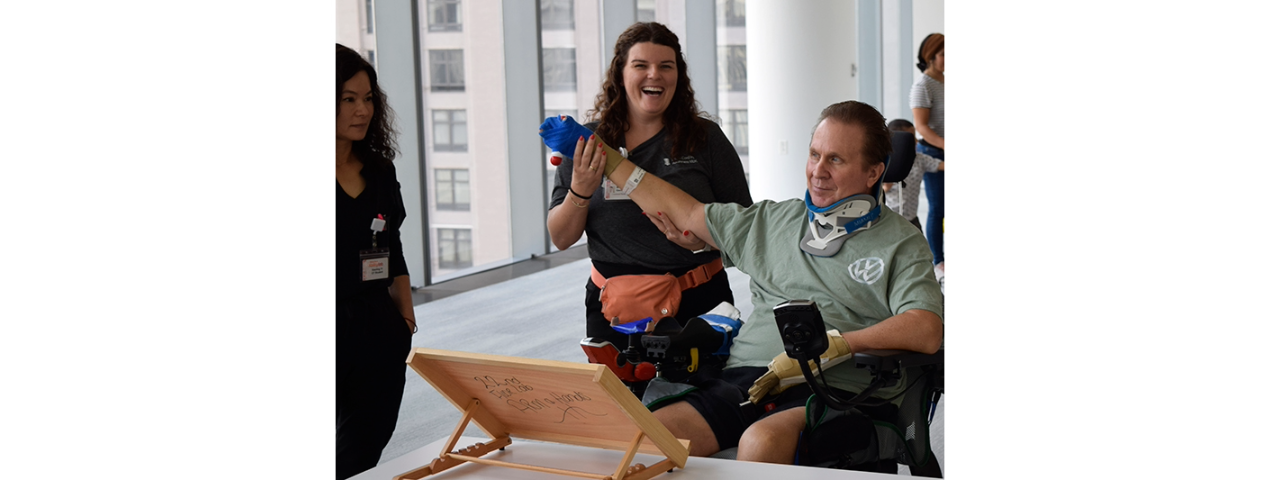Body
For individuals who live with chronic pain — either from an injury, illness or chronic condition — it can be challenging to remain present. Pain can lead to an increased focus on physical symptoms and internal feelings, which can exacerbate the pain experience.
For example, people with chronic pain often worry about what their future will look like — wondering if they will play their favorite sport again, attend a social event or even return to a job. They also tend to ruminate, thinking about how enjoyable their life once was and if they could have done something differently to prevent their current circumstances.
Worrying about the future and ruminating about the past takes people out of the moment — and thus impacts their ability to live a valued life in the present.
Mindfulness for Chronic Pain
Body
Mindfulness is an essential tool for engaging in life — and can be an excellent practice to help people manage their chronic pain by keeping them anchored to the present. Mindfulness is the act of purposefully paying attention to the present moment without judgment and without trying to change anything, examining details with the same curiosity and awe one would view a beautiful sunset.
By practicing mindfulness, individuals become more aware of their internal experiences (thoughts, emotions and physical sensations), as well as their external experiences (their environment and social interactions).
Some of the benefits of mindfulness include improved sleep, increased ability to focus, improved physical health and reduced emotional distress and reactivity — all of which can help reduce chronic pain and make it feel less salient as opposed to all consuming.
Strategies to Practice Mindfulness
Body
- Listening to mindfulness exercises: A number of digital resources are available to practice mindfulness, including phone applications. These exercises instruct listeners to focus on the present, and to pay attention to thoughts, emotions, physical sensations, sounds and/or the breath.
- Mindful breathing: In mindful breathing, individuals focus on the physical sensations of taking a breath to become mindfully aware of their breathing, including the air flowing in and out of their nose and the movement of their stomach and chest.
- Labeling thoughts and emotions: Labeling thoughts and emotions, and then redirecting the mind back to the present moment, is another mindfulness technique. An example of this might be labeling thoughts as “just worrying” when feeling cognitively stuck — and then focusing back on the present task. This allows individuals to acknowledge the experience, without allowing distressing thoughts or emotions to spiral about pain.
- Mindful eating: Individuals so often eat without even tasting or enjoying their food. Use the senses to mindfully eat, including examining the sight, texture, smell and taste to fully experience eating.
- Mindfully describing the environment: Learning to describe the external world without judgment can help people with chronic pain to create distance from their physical experience by focusing their attention outside of the body. They may enjoy mindfully journaling about the room they are in, describing colors, textures and all the details, or objectively describing aspects of their environment outside of their window.
- Incorporate mindfulness into routine: As individuals become more fluent in practicing mindfulness, they can begin to mindfully engage in everyday activities, like mindfully washing the dishes, feeling the hot water and the texture of the soap. Other examples include mindfully showering, brushing teeth, and walking. Completing these activities of daily living mindfully can allow individuals with chronic pain to stay engaged longer and with more enjoyment, without being overly focused on the pain experience.
Meet the Expert
Body
Kristin Malewig, PhD, is a licensed psychologist on the Renée Crown Center for Spinal Cord Innovation and in the Pain Management Center at Shirley Ryan AbilityLab. She also is an instructor in the Department of Physical Medicine & Rehabilitation (PM&R) at Northwestern University Feinberg School of Medicine. She graduated with her PhD in Clinical Psychology from Southern Illinois University and completed her predoctoral internship and postdoctoral fellowship at Hennepin Healthcare in Minneapolis. Dr. Malewig has been practicing as a health and rehabilitation psychologist since 2016. Her primary clinical work is with adults with pain, spinal cord injury, brain injury and other complex medical conditions.

